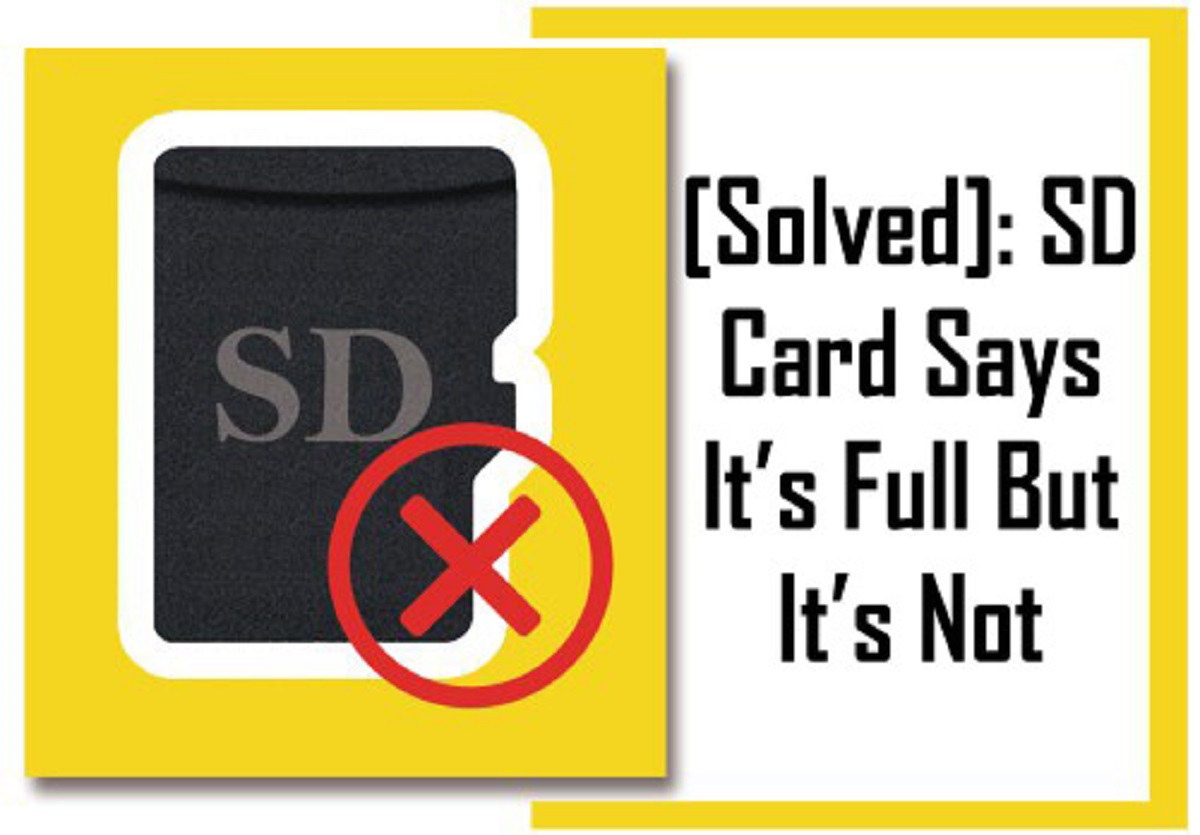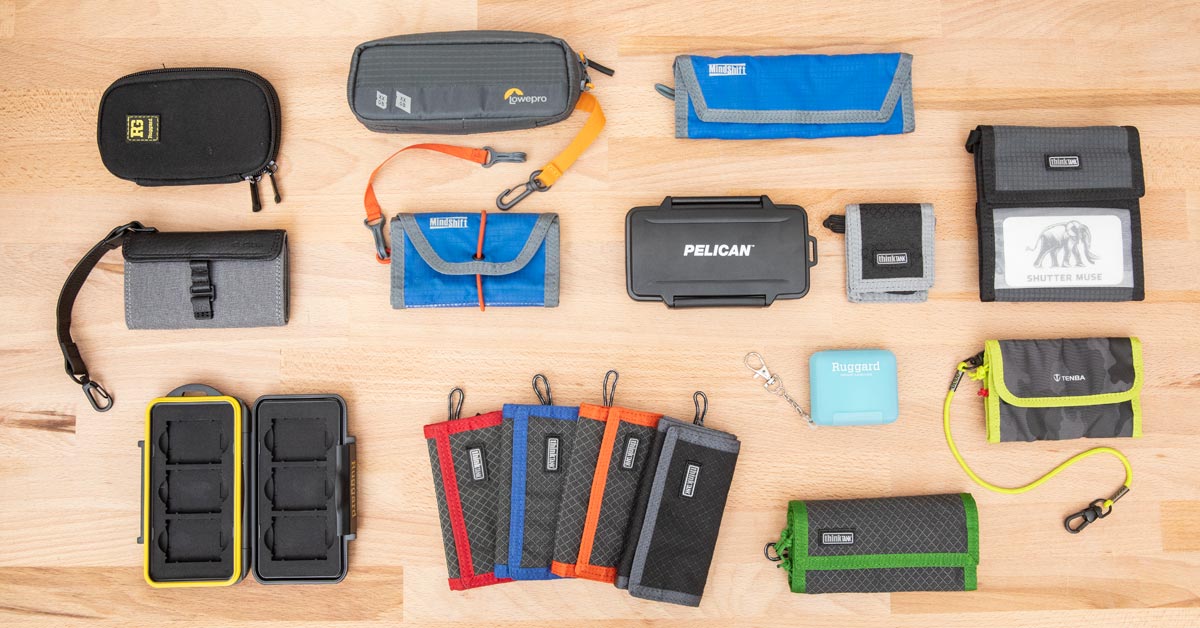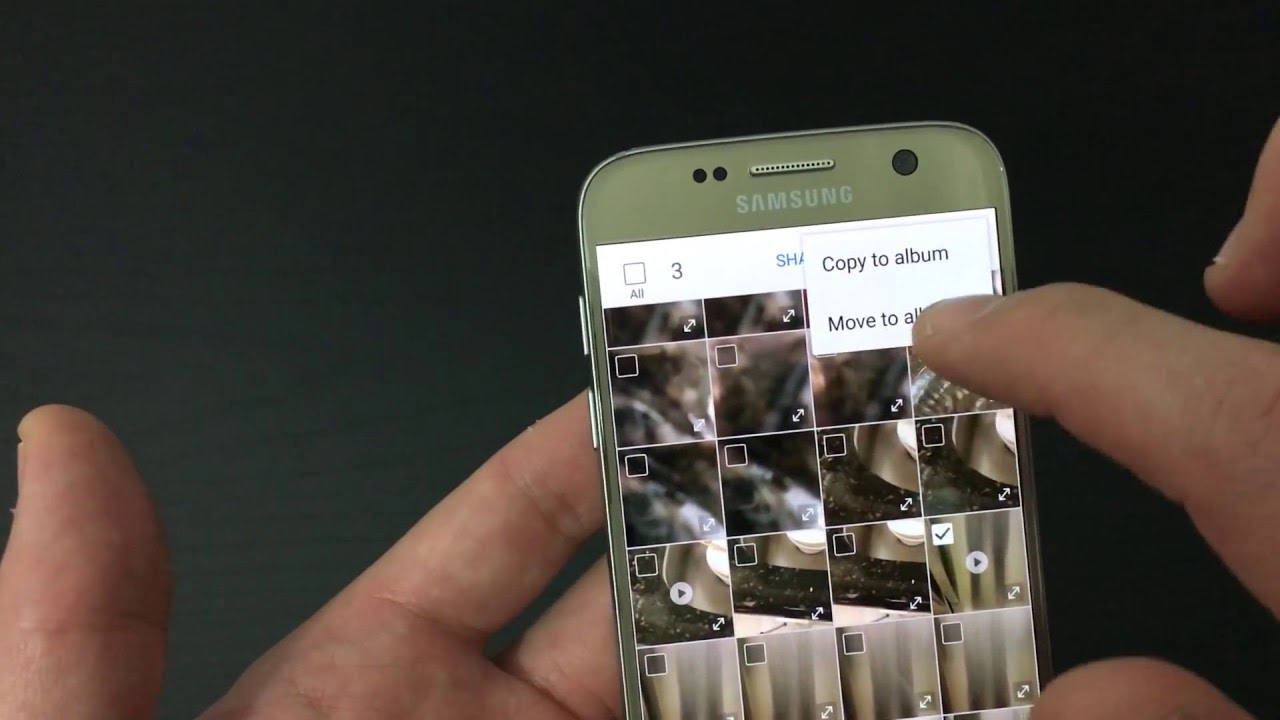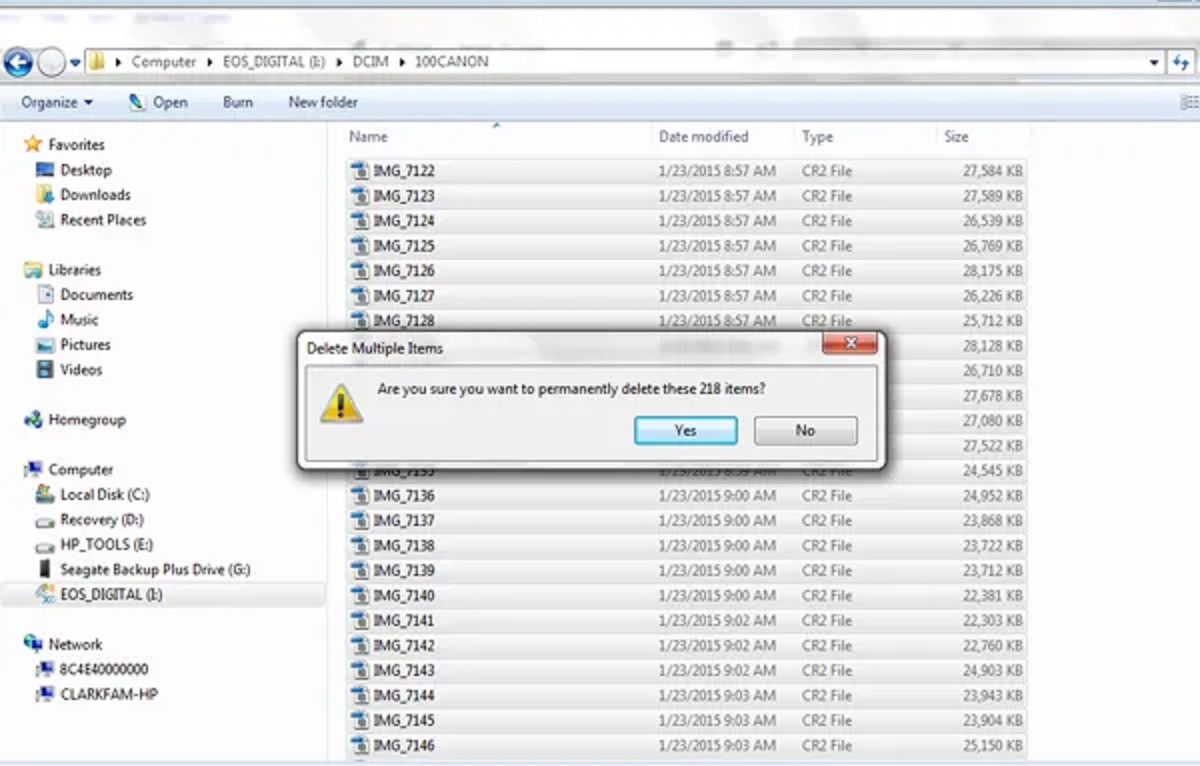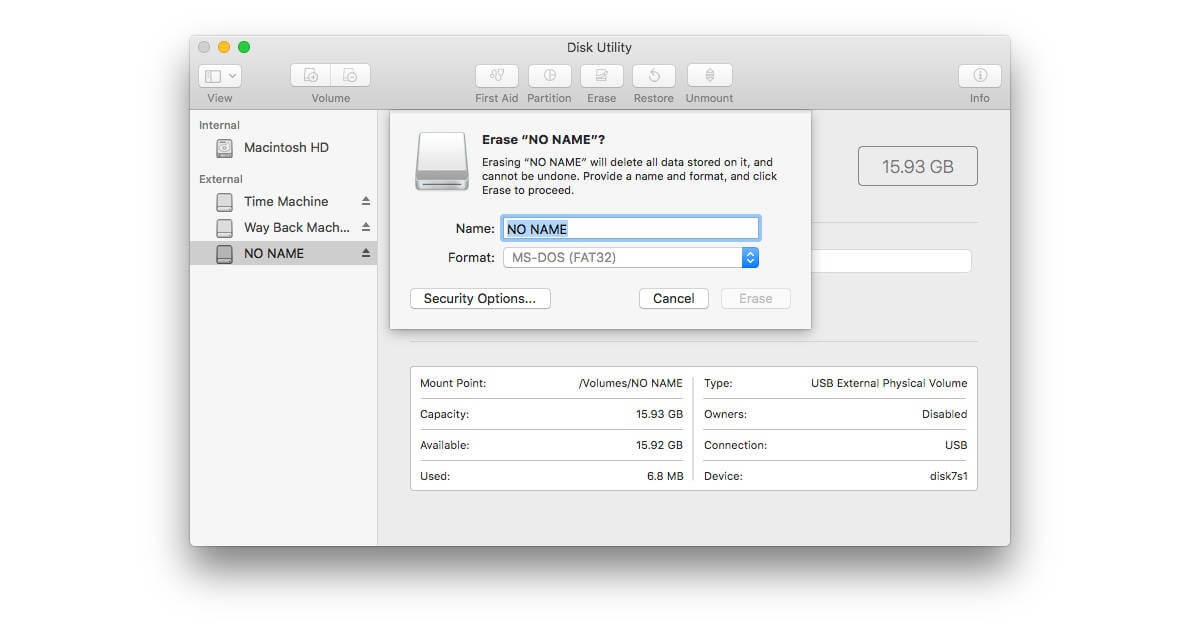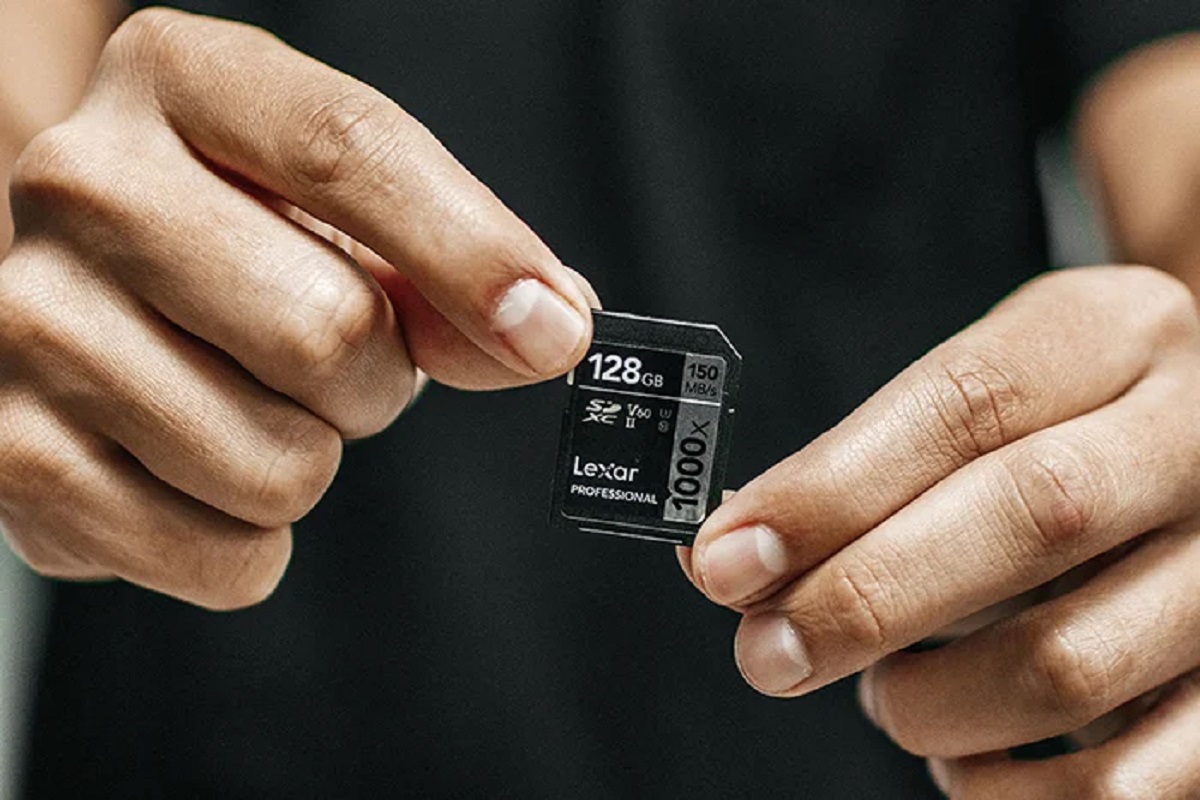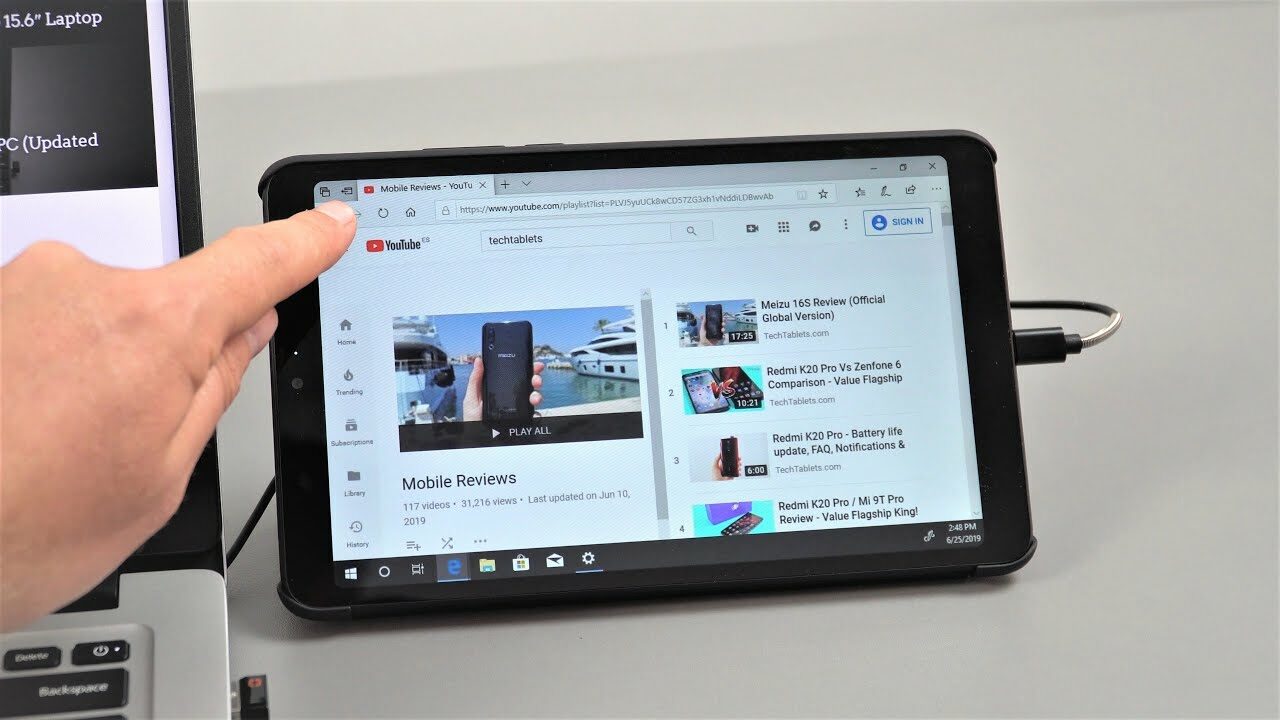Introduction
An SD card is a popular and convenient storage option for various devices such as digital cameras, smartphones, and tablets. It allows you to expand the storage capacity of your device and carry large amounts of data with ease. However, it can be frustrating to encounter an error message stating that your SD card is full when it appears to be empty. This issue is not uncommon and can leave users confused and searching for a solution.
When an SD card states that it is full, despite appearing empty, there are several factors that could be causing this misleading message. It is essential to understand the common causes to identify the best solution for your specific situation. In this article, we will explore the possible reasons behind an SD card saying it is full when it is empty, as well as effective solutions to resolve this issue.
Before diving into the potential causes and solutions, it is essential to note that troubleshooting an SD card issue requires some technical knowledge and caution. It is recommended to follow the steps carefully and make regular backups of your data to avoid any unintentional data loss.
Now, let’s explore some common causes that could lead to an SD card appearing as full, even when it is empty.
Common Causes of SD Card Saying Full When Empty
There can be several reasons why an SD card might indicate it is full when it is actually empty. Understanding these common causes can help you troubleshoot the issue effectively. Let’s take a look at the most frequent culprits:
1. Corrupted File System: A corrupted file system can cause the SD card to display incorrect information about its storage capacity. Various factors, such as abrupt removal, power failure, or using the card on multiple devices, can lead to file system corruption.
2. Hidden Files and Folders: Sometimes, hidden files and folders may occupy storage space without being visible to the user. These files can be system-related or generated by apps, and they might not appear in the regular file explorer view.
3. Formatting Issues: Improper formatting of the SD card can lead to incorrect storage capacity readings. If the card is not formatted correctly, it can cause the device to misinterpret the available space and display inaccurate information.
4. Software Glitches: Occasionally, software glitches within the operating system or the device firmware can cause the SD card to report incorrect storage capacity. These glitches can occur due to outdated software, incompatible drivers, or firmware issues.
Being aware of these common causes will allow you to narrow down the potential solutions and resolve the issue promptly. In the following sections, we will discuss effective solutions to address the problem of an SD card saying it is full when it is empty. Let’s explore these solutions step-by-step to regain the correct storage capacity of your SD card.
Corrupted File System
A common reason for an SD card to show as full when it is empty is a corrupted file system. The file system is responsible for organizing and managing the data on the SD card. When the file system becomes corrupted, it can lead to inaccurate readings of the available storage space.
Various factors can contribute to file system corruption, including improper removal of the SD card, power failures, or using the card on multiple devices without properly ejecting it. Additionally, physical damage to the card can also result in a corrupted file system.
To address this issue, you can try the following solutions:
1. Reboot the Device: Start by rebooting the device that is reading the SD card. Sometimes, a simple restart can help resolve any temporary glitches or inconsistencies in the file system.
2. Use Disk Error Checking: For Windows users, you can utilize the built-in Disk Error Checking feature to scan and repair any file system errors. To do this, connect the SD card to your computer, open File Explorer, right-click on the SD card, select “Properties,” navigate to the “Tools” tab, and click on “Check.”
3. Disk Utility for Mac: Mac users can use the built-in Disk Utility tool to verify and repair any file system errors on their SD card. Connect the SD card to your Mac, open Disk Utility (located in the Utilities folder), select the SD card from the list of available drives, and click on “First Aid” to perform the repair process.
4. Use Third-Party Recovery Software: If the above solutions do not resolve the issue, you can try using third-party SD card recovery software. These specialized tools can help repair and recover data from a corrupted file system. Ensure that you select a reputable and reliable software that is compatible with your operating system.
By addressing the corrupted file system, you should be able to regain the accurate storage capacity reading on your SD card. However, if the issue persists, it is advisable to explore other potential causes and solutions, which will be discussed in the subsequent sections.
Hidden Files and Folders
Another possible reason for an SD card to display as full when it is empty is the presence of hidden files and folders. These files can take up storage space without being visible to the user and can result in the incorrect reading of available storage capacity.
Hidden files and folders can be system-related or generated by specific applications. These files are often essential for the proper functioning of the device or the application but are not meant to be directly accessed or modified by the user.
To address this issue, you can follow these steps:
1. Show Hidden Files and Folders: Enable the option to display hidden files and folders on your device. For Windows users, open File Explorer, go to the “View” tab, and check the “Hidden items” box. For Mac users, open Finder, press Command + Shift + Period (.), and hidden files and folders will become visible.
2. Delete Unnecessary Hidden Files: Once you can see the hidden files and folders, navigate through the directories on your SD card and identify any unnecessary files or folders. Be cautious not to delete critical system files that are essential for the proper functioning of your device.
3. Use Command Prompt or Terminal: For more advanced users, you can use the Command Prompt (Windows) or Terminal (Mac) to navigate to the SD card directory and delete specific hidden files using command-line commands.
4. Reset App Settings: If you suspect that the hidden files are generated by a specific application, you can try resetting the app settings to their default values. This can be done through the settings or preferences menu of the respective application.
By uncovering and removing any hidden files and folders, you can free up storage space on your SD card and rectify the issue of it appearing as full when it is actually empty. However, if this solution does not resolve the problem, continue exploring the other potential causes and solutions outlined in the subsequent sections.
Formatting Issues
Formatting issues can also contribute to an SD card displaying as full when it is empty. Improper formatting of the SD card can cause the device to misinterpret the available space and result in inaccurate storage capacity readings.
Here are some solutions to address formatting issues:
1. Reformat the SD Card: Start by reformatting the SD card to ensure it is properly formatted. Before proceeding with this solution, note that reformatting will erase all data on the SD card. Therefore, it is crucial to make a backup of any important files before performing the reformatting process.
To reformat the SD card in Windows, connect it to your computer, open File Explorer, right-click on the SD card, select “Format,” choose the desired file system format (such as FAT32 or exFAT), and click on “Start” to initiate the formatting process.
For Mac users, connect the SD card to your Mac, open Disk Utility (located in the Utilities folder), select the SD card from the list of available drives, click on the “Erase” tab, choose the desired format (such as MS-DOS File System or exFAT), and click on “Erase” to reformat the SD card.
2. Use a Different Formatting Tool: If the built-in formatting options do not resolve the issue, you can try using a different formatting tool. There are several third-party utilities available that provide more advanced formatting options and can help resolve formatting-related problems. Ensure that you select a reliable tool that is compatible with your operating system.
By reformatting the SD card correctly or using a different formatting tool, you can eliminate any formatting issues and ensure that the device accurately reads the available storage capacity. However, if the issue persists, continue exploring the other potential causes and solutions outlined in the subsequent sections.
Software Glitches
Software glitches within the operating system or the device firmware can also cause an SD card to show as full when it is actually empty. These glitches can occur due to outdated software, incompatible drivers, or firmware issues.
To address this issue, you can try the following solutions:
1. Update the Operating System: Make sure that your device’s operating system is up to date. Manufacturers often release software updates that address bugs and improve compatibility. Check for pending updates and install them to ensure that your device is running the latest software version.
2. Update Device Drivers: Outdated or incompatible device drivers can cause software conflicts and glitches that affect the accurate reading of the SD card’s storage capacity. Visit the manufacturer’s website or use a driver update utility to check for any available driver updates for your specific device model.
3. Update Firmware: If the issue persists, it may be necessary to update the firmware of your device. Manufacturers periodically release firmware updates that address bugs and improve overall device performance. Check the manufacturer’s website or the device’s system settings for any firmware updates and follow the provided instructions to update the firmware.
4. Reset Device Settings: If none of the above solutions resolve the issue, you can try resetting the device settings to their default values. This can help eliminate any software conflicts or customizations that may be interfering with the accurate reading of the SD card’s storage capacity. Refer to the device’s user manual or the manufacturer’s website for instructions on how to perform a reset, as the process may vary depending on the device model.
By addressing any software glitches and ensuring that your device’s software and firmware are up to date, you can enhance compatibility and resolve any issues related to the SD card displaying as full when it is actually empty. However, if the problem persists, continue exploring the other potential causes and solutions outlined in the subsequent sections.
Solution 1: Scan for Hidden Files and Folders
If your SD card is showing as full when it is empty, one possible solution is to scan for hidden files and folders that might be occupying storage space without being visible. Hidden files can be system-related or generated by specific applications, and they might not appear in the regular file explorer view.
Here’s how you can scan for hidden files and folders:
1. Enable Show Hidden Files and Folders: Start by enabling the option to display hidden files and folders on your device. For Windows users, open File Explorer, go to the “View” tab, and check the “Hidden items” box. Mac users can open Finder, press Command + Shift + Period (.), and hidden files and folders will become visible.
2. Navigate Through the SD Card: Once hidden files and folders are visible, navigate through the directories on the SD card. Look for any hidden files that might be occupying storage space.
3. Delete Unnecessary Hidden Files and Folders: Identify any unnecessary hidden files or folders and safely delete them. Be cautious not to delete critical system files that are essential for the proper functioning of your device.
4. Use Antivirus Software: It’s also a good idea to scan your SD card for any potential malware or viruses that might be causing the issue. Use reputable antivirus software to perform a thorough scan of your SD card and remove any detected threats.
By scanning for hidden files and folders, you can identify and remove any unnecessary files that might be taking up storage space on your SD card. This can help resolve the issue of it appearing as full when it is actually empty. If this solution does not resolve the problem, continue exploring the other potential causes and solutions outlined in the subsequent sections.
Solution 2: Reformat the SD Card
If your SD card continues to show as full when it is empty, another solution you can try is to reformat the SD card. Reformatting the card can help resolve any formatting issues that might be causing the inaccurate storage capacity readings.
Before proceeding with the reformatting process, keep in mind that it will erase all data stored on the SD card. Therefore, it is crucial to create a backup of any important files beforehand.
Here’s how you can reformat the SD card:
1. Connect the SD Card to your Computer: Insert the SD card into the appropriate slot or use an external card reader to connect it to your computer.
2. Open File Explorer (Windows) or Finder (Mac): Once connected, open File Explorer on Windows or Finder on Mac to access the SD card.
3. Right-click on the SD card: In File Explorer (Windows), right-click on the SD card’s drive letter. In Finder (Mac), click on the SD card’s name in the sidebar.
4. Select the “Format” option: From the context menu that appears, choose the “Format” option. A formatting window will open with various formatting options.
5. Choose the File System Format: Select the desired file system format, such as FAT32, exFAT, or NTFS for Windows, or MS-DOS (FAT) or exFAT for Mac. The file system format you choose should be compatible with your device.
6. Start the Formatting Process: After selecting the file system format, click on the “Start” or “Erase” button to initiate the formatting process. Confirm any prompts that may appear.
7. Safely Eject the SD Card: Once the formatting process completes, safely eject the SD card from your computer before removing it.
By reformatting the SD card properly, you can eliminate any formatting issues and ensure that the device accurately recognizes the available storage capacity. If this solution does not resolve the problem, continue exploring the other potential causes and solutions outlined in the subsequent sections.
Solution 3: Use a Different Software or Device
If you are still experiencing the issue of your SD card appearing as full when it is empty, consider using a different software or device to read the card. Sometimes, compatibility issues or software limitations on your current device can result in inaccurate storage capacity readings.
Here are a few steps you can take to resolve the problem:
1. Try a Different Device: Use the SD card with a different device to see if the issue persists. This could involve trying it in another camera, smartphone, or computer to determine if the problem lies with the SD card or the device you are currently using.
2. Use Different Software: If the issue occurs when using specific software to access the SD card, consider trying alternative software. For example, if you are experiencing the problem with your computer’s default file explorer, try using a third-party file explorer to read the SD card and check if it displays the accurate storage capacity.
3. Update Software: Ensure that the software you are using to access the SD card is up to date. Outdated or incompatible software can cause various issues, including incorrect storage capacity readings. Check for any available updates for the software and install them to see if it resolves the issue.
4. Test with Another SD Card: To further isolate the problem, try using a different SD card with the same software or device. If the new card displays the correct storage capacity, it suggests that the issue may be specific to the original SD card.
By using a different software or device, you can determine if the problem lies with the SD card itself or the compatibility of your current setup. This allows you to narrow down the potential causes and find an appropriate solution. If the problem persists, continue exploring the other potential causes and solutions outlined in the subsequent sections.
Solution 4: Update Firmware and Drivers
If you are still facing the issue of your SD card appearing as full when it is empty, it may be necessary to update the firmware and drivers of your device. Outdated firmware or incompatible drivers can cause software conflicts and glitches that affect the accurate reading of the SD card’s storage capacity.
Follow these steps to update the firmware and drivers:
1. Check for Firmware Updates: Visit the manufacturer’s website or check the device’s system settings for any available firmware updates. Manufacturers often release firmware updates to address bugs, enhance compatibility, and improve overall device performance. Follow the provided instructions to update the firmware of your device.
2. Update Device Drivers: Outdated or incompatible device drivers can also cause software conflicts. To update your device drivers:
- For Windows users, open the Device Manager, expand the relevant category (such as “Disk drives” or “Universal Serial Bus controllers”), right-click on the device, and choose the “Update driver” option.
- For Mac users, visit the manufacturer’s website or use a driver update utility to check for any available driver updates for your specific device model.
3. Follow the Provided Instructions: When updating firmware or drivers, make sure to follow the instructions provided by the manufacturer or the software update utility carefully. This will help ensure a successful update and minimize the risk of any potential issues.
By updating the firmware and drivers of your device, you can resolve software conflicts and enhance compatibility, thereby addressing any issues related to the SD card appearing as full when it is actually empty. If this solution does not resolve the problem, continue exploring the other potential causes and solutions outlined in the subsequent sections.
Conclusion
Encountering an SD card that displays as full when it is empty can be frustrating, but by understanding the common causes and implementing the appropriate solutions, you can resolve this issue and regain the accurate storage capacity reading.
We explored several potential causes, including corrupted file systems, hidden files and folders, formatting issues, and software glitches. Each of these causes has corresponding solutions that you can try to address the problem. From scanning for hidden files and folders to updating firmware and drivers, there are various steps you can take to troubleshoot the issue.
It is essential to approach the solutions with caution and make sure to back up your data before attempting any changes that may result in data loss. Additionally, consider seeking professional assistance or contacting the device manufacturer if you are unsure about any steps or if the problem persists despite your efforts.
Remember that maintaining an up-to-date operating system, using reliable software, and properly ejecting the SD card are essential practices that can prevent future issues and ensure smooth functioning.
By following the solutions outlined in this article, you should be able to overcome the problem of your SD card indicating it is full when it is actually empty. However, in some rare cases, the issue may be hardware-related, requiring professional repair or replacement of the SD card.
Stay vigilant and regularly check for any signs of file system corruption, hidden files, or formatting issues to prevent this problem from occurring in the future. With proper maintenance and troubleshooting, your SD card can continue to serve as a reliable and efficient storage option for your digital devices.







